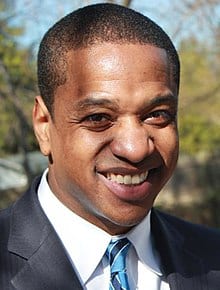Ralph Northam’s Mistake
Vann R. Newkirk II, Atlantic, February 4, 2019
On Friday, faced with a photo on his medical-school yearbook page featuring one person in blackface and another wearing a Ku Klux Klan robe, Virginia Governor Ralph Northam apologized. By Saturday, he said he’d never taken the photo, never seen the yearbook, and didn’t even go to the party where it was taken, adding that a mix-up in the yearbook’s production must have created an error.
Over the span of a truly bizarre 24 hours, Virginian voters saw the photos first disseminated by right-wing blogs, then confirmed by the mainstream press; discovered that one of Northam’s college nicknames was “Coonman”; saw him admit to and then deny wearing blackface or a Klan robe; and then saw him admit to once blackening his face with shoe polish to imitate Michael Jackson. During Saturday’s press conference, after a reporter asked whether Northam could do the moonwalk, he appeared to contemplate doing it at the podium.
{snip}
{snip} Virginia’s lieutenant governor, Justin Fairfax, who would succeed Northam should he resign, issued a strong statement, saying Virginians “cannot condone the actions from his past, that, at the very least, suggest a comfort with Virginia’s darker history of white supremacy, racial stereotyping, and intimidation.” Northam’s days as governor could be numbered.

Justin Fairfax
{snip} The main effect of Northam’s statements over the weekend has not been to clarify anything but to obfuscate, to create an epistemological thicket of uncertainty around a yearbook photo whose meaning seems otherwise obvious. Yet in Virginia, a state that’s currently the center of gravity of the struggle over the future of white supremacy in America, it was never the particulars that mattered.
Virginia maintains a special place in the national mythology, in the history of white supremacy, and thus, in the ongoing debate about white supremacy’s place in the nation’s present. {snip}
{snip}
On the one hand, Corey Stewart launched a deadly serious campaign for the GOP’s nomination steeped in neo-Confederate nostalgia. Stewart succeeded in making the eventual Republican nominee Ed Gillespie — who ran fearmongering ads about black people convicted of felonies voting and the threat posed by the MS-13 gang — look racially moderate by comparison. Both Gillespie and Stewart opposed the removal of Confederate statues and iconography. Northam himself originally demurred on the issue during the campaign, saying each removal should be a local issue. But after Heyer’s death and after then-Governor McAuliffe came out in favor of removing the statues, Northam pledged to be “a vocal advocate” for their removal.
{snip} But it was possible to see a sort of cold calculus in Northam’s decision. Given the injection of liberals into Northern Virginia, outside Washington, D.C., and the changing shape of the electorate, Democrats knew they could win by boosting black turnout even if it meant losing some white suburban and rural votes.
{snip}
And those black voters turned out for Ralph Northam. They turned out for Democrats. Black voters outperformed their demographic share and made up 20 percent of the Virginia electorate in 2017. In majority-minority districts, Northam’s support soared relative to McAuliffe’s own success in 2013. Democrats also made major gains in the House of Delegates, and Fairfax won his race for lieutenant governor, becoming the second black person to hold statewide office in Virginia.
This was all a special moment in Virginia’s history. Black communities rallied against the threat of a very specific kind of overt racism that lives in Virginia’s bones, giving Democrats and Northam a clear mandate. That they also elected Fairfax — the descendant of an enslaved man manumitted by the scion of one of Virginia’s founding families — seemed particularly symbolic.
This week, Northam has been revealed to be in violation of that mandate. He was never a particularly quick or vocal advocate of racial justice, or of reassessing Virginia’s peculiar legacy, but black voters are nothing if not pragmatic. {snip}
{snip} The revelation of racist themes across his entire medical-school yearbook throws into question not only Northam’s political career, but the medical careers of his peers, as they cared for minority patients. The revelations of the weekend, of a politician once nicknamed “Coonman,” destroy his moral and rhetorical credibility in undertaking the necessary project of standing against surging racism from the right. And the revelations come at a crucial time, as hate crimes in the country have soared, and as anti-immigrant rhetoric from Trump has further polarized racial dynamics.
{snip}
But whether he resigns or not, his ability to take on the project of combatting white supremacy has been hobbled. {snip}















